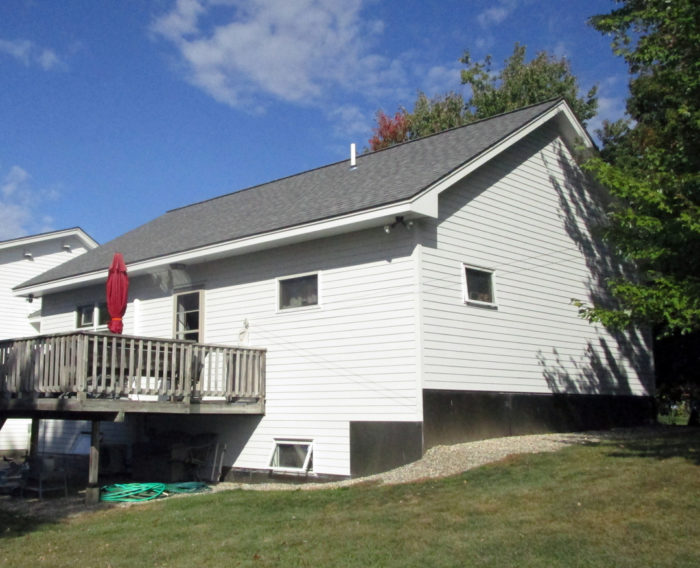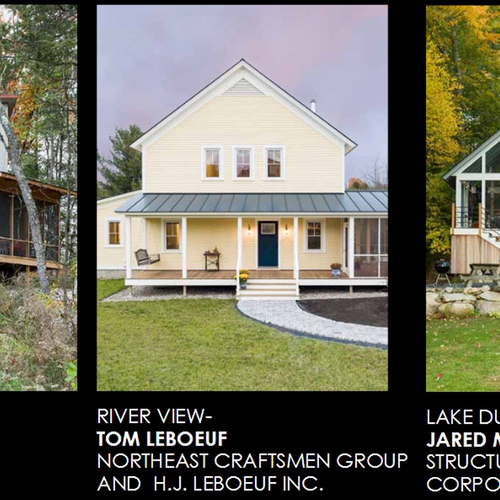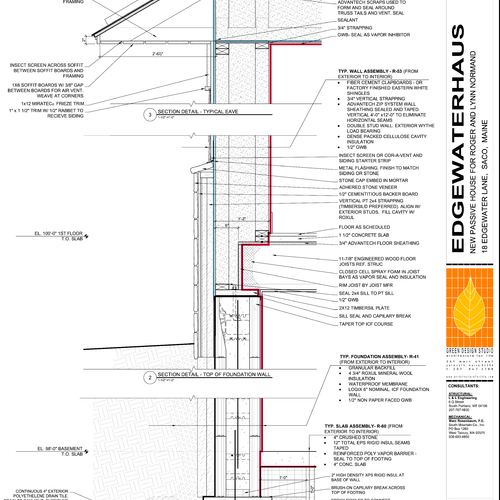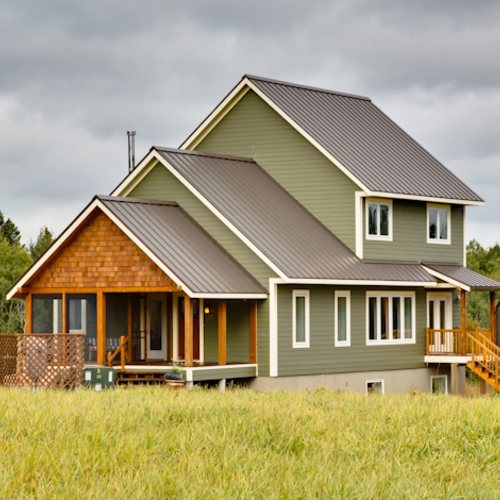
Image Credit: Images #1, #2, #11, #13, #15, #20: Martin Holladay
Were the techniques of superinsulation well understood in the early 1980s? The answer depends on who you talk to. Back then, in most areas of the country, residential builders were slapping together leaky homes insulated with thin fiberglass batts. Yet even 35 years ago, a small subset of builders had already adopted superinsulation techniques. In the early 1980s, anyone who was interested in the topic had access to in-depth information on superinsulation details.
What milestones were passed from 1977 to 1983? Well, the Saskatchewan Conservation House was completed in 1977. Gene Leger finished building his superinsulated double-stud house in Pepperell, Massachusetts, in 1978. Canada launched the R-2000 program in 1980. Manufactured blower doors first became available in 1980. The monthly superinsulation newsletter, Energy Design Update, began publication in 1982. Manufactured HRVs first became available in 1982. So there was a lot of activity in the field.
When builders followed the techniques advocated by superinsulation pioneers, were the resulting homes any good? Opinions vary. According to many Passivhaus advocates, builders interested in superinsulation were in the dark before Wolfgang Feist developed the Passivhaus standard. In this vein, Katrin Klingenberg, the founder of PHIUS, wrote in May 2009, “Most high performance builders fail exactly where there is no PHPP [Passive House Planning Package software] to guide them in their optimization process. … It is a delicate creature, the Passive House, and yes, if not done right, it can melt away in no time and that would give the effort a really bad name. We simply can’t afford that to happen again. That research experiment with a lot of guess work was conducted in the ’80s and one of the reasons that those superinsulated buildings did not fly was because many of them did develop severe moisture problems in wall systems and indoors and overheated.”
Was Klingenberg right? Did some of the superinsulated…
Weekly Newsletter
Get building science and energy efficiency advice, plus special offers, in your inbox.

This article is only available to GBA Prime Members
Sign up for a free trial and get instant access to this article as well as GBA’s complete library of premium articles and construction details.
Start Free TrialAlready a member? Log in















7 Comments
Great piece!
I completely agree that one of the unfortunate consequences of PH has been to mystify energy efficiency, and make it the purview of consultants.
Congrats to Giroux. God bless the tinkerers.
Response to Dan Kolbert
Dan,
I agree. If a builder gets the basics right -- paying attention to air sealing and installing a good ventilation system -- then it's simply untrue that a superinsulated house is (as Klingenberg said) "a delicate creature" that "can melt away in no time" or "develop severe moisture problems."
Love the craftwork of hand drawn drafting!
Something has been lost in the age of computer aided design print outs (not that I'd ever go back.) The hand edited cross-out and re-dimensioning documents the evolution of the design.
As long as the thermal output of the (ridiculously) oversized boiler is being buffered in the 80 gallon tank the efficiency hit from the oversizing isn't very big. That's over 670lbs of total water-equivalent thermal mass in play. Even a 10F differential on the tank's aquastat would deliver ~4 minute burns, and with heat purging controls on the boiler the thermal mass of the boiler is in play too. At the very low-loads of the house it'll never be more than 3-4 burns/hr and never a short cycle.
Thank you for a piece of relevant history
This article has too many excellent aspects to name. But, if I had to pick one that stands out for me, it is the beauty of the thermally broken wall with the air/vapor barrier protected behind the inner stud wall, with the utilities running within that inner wall. As needed, work can be done on the utilities without interrupting (or minimally so) that critical air barrier. Mr. Giroux's solution did so not only with a minimum of excess material but also in a way that was/is actually quite easy to build, using familiar, readily available materials, and not dependent upon perfect weather conditions to complete the installation.
Thank you Martin for seeking out this exemplary project, and thank you Mr. Giroux for your work and your willingness to share. In the case of this house, I hope that history repeats itself.
Response to Rachel Wagner
Rachel,
I'm glad you liked the story. The trick of installing the polyethylene air barrier on the outer side of the inner stud wall of a double-stud wall was developed by the Saskatchewan pioneers. Here's how the detail is described in the 1980 guide, Energy Efficient Housing: A Prairie Approach: "Double stud wall construction: ... The vapour barrier may be placed away from the inside surface of the walls to protect it during construction and to minimize penetration by electrical wires and plumbing. A rough rule of thumb for the Canadian Prairie climate is that you should have twice as much insulation outside the vapor barrier as inside to prevent condensation in the wall."
The detail drawing reproduced below comes from this 1980 guide.
As I'm sure you know, the "service wall" details used by some Passivhaus builders continue this 36-year-old tradition. For more information on service walls, see this GBA article: Service Cavities for Wiring and Plumbing.
.
Nice job Mr. Giroux!
Thanks for covering the details in this article, especially the note about opening up the wall to do the addition, and the comments regarding his upgraded boiler system.
I wish we had comparative utility records for his house and a neighbor's standard built house. Maybe someone (or his local utility company) could do a complimentary blower door test for him!
Hard to believe he doesn't know what his heating costs are after going to all that trouble to draft, build and detail the house. I would have been running to mailbox in anticipation of my utility bill just to see if the effort was worth it. I guess after thirty years the excitement wears off..... indeed, God bless the tinkerers!
Response to S. Maris
S. Maris,
Steve Giroux told me that he buys about 400 gallons of fuel oil a year. That amount of fuel (about $860 worth) heats his house, including the master suite addition he built in 2000, and provides all of his domestic hot water.
It's worth mentioning three points:
1. Before he built his addition, he was heating a smaller space. (The master suite is a bonus room that is exposed on 5 of its 6 sides.)
2. Steve told me that he has had a problem (since solved) with hot water that was thermosiphoning through his heating coil loop during the summer.
3. Using an oversized oil-fired boiler to provide domestic hot water during the summer months is inefficient.
In short, I suspect that Steve Giroux's heating and hot water bills could be lowered if he used different equipment.
That said, Steve has built a wonderful house, and his fuel bills are significantly lower than those of his neighbors.
Log in or become a member to post a comment.
Sign up Log in